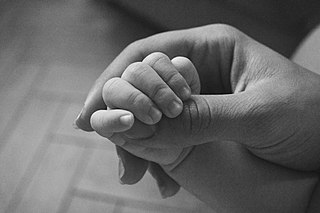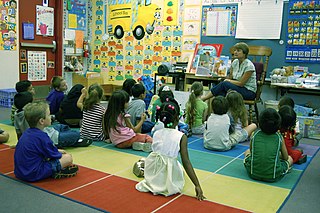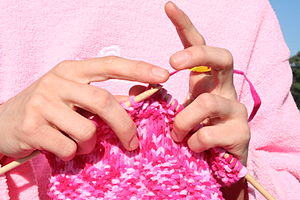
Developmental psychology is the scientific study of how and why humans grow, change, and adapt across the course of their lives. Originally concerned with infants and children, the field has expanded to include adolescence, adult development, aging, and the entire lifespan. Developmental psychologists aim to explain how thinking, feeling, and behaviors change throughout life. This field examines change across three major dimensions, which are physical development, cognitive development, and social emotional development. Within these three dimensions are a broad range of topics including motor skills, executive functions, moral understanding, language acquisition, social change, personality, emotional development, self-concept, and identity formation.

Parenting or child rearing promotes and supports the physical, emotional, social, spiritual and cognitive development of a child from infancy to adulthood. Parenting refers to the intricacies of raising a child and not exclusively for a biological relationship.
A motor skill is a function that involves specific movements of the body's muscles to perform a certain task. These tasks could include walking, running, or riding a bike. In order to perform this skill, the body's nervous system, muscles, and brain have to all work together. The goal of motor skill is to optimize the ability to perform the skill at the rate of success, precision, and to reduce the energy consumption required for performance. Performance is an act of executing a motor skill or task. Continuous practice of a specific motor skill will result in a greatly improved performance, which leads to motor learning. Motor learning is a relatively permanent change in the ability to perform a skill as a result of continuous practice or experience.
Muscle memory is a form of procedural memory that involves consolidating a specific motor task into memory through repetition, which has been used synonymously with motor learning. When a movement is repeated over time, the brain creates a long-term muscle memory for that task, eventually allowing it to be performed with little to no conscious effort. This process decreases the need for attention and creates maximum efficiency within the motor and memory systems. Muscle memory is found in many everyday activities that become automatic and improve with practice, such as riding bikes, driving motor vehicles, playing ball sports, typing on keyboards, entering PINs, playing musical instruments, poker, martial arts, swimming, and dancing.
Dysgraphia is a neurological disorder and learning disability that concerns written expression, which affects the ability to write, primarily handwriting, but also coherence. It is a specific learning disability (SLD) as well as a transcription disability, meaning that it is a writing disorder associated with impaired handwriting, orthographic coding and finger sequencing. It often overlaps with other learning disabilities and neurodevelopmental disorders such as speech impairment, attention deficit hyperactivity disorder (ADHD) or developmental coordination disorder (DCD).
A delayed milestone, which is also known as a developmental delay, refers to a situation where a child does not reach a particular developmental milestone at the expected age. Developmental milestones refer to a collection of indicators that a child is anticipated to reach as they grow older.
Early childhood is a stage in human development following infancy and preceding middle childhood. It generally includes toddlerhood and some time afterward. Play age is an unspecific designation approximately within the scope of early childhood.
Child development stages are the theoretical milestones of child development, some of which are asserted in nativist theories. This article discusses the most widely accepted developmental stages in children. There exists a wide variation in terms of what is considered "normal", caused by variations in genetic, cognitive, physical, family, cultural, nutritional, educational, and environmental factors. Many children reach some or most of these milestones at different times from the norm.

Gross motor skills are the abilities usually acquired during childhood as part of a child's motor learning. By the time they reach two years of age, almost all children are able to stand up, walk and run, walk up stairs, etc. These skills are built upon, improved and better controlled throughout early childhood, and continue in refinement throughout most of the individual's years of development into adulthood. These gross movements come from large muscle groups and whole body movement. These skills develop in a head-to-toe order. The children will typically learn head control, trunk stability, and then standing up and walking. It is shown that children exposed to outdoor play time activities will develop better gross motor skills.
Baby-led weaning is an approach to adding complementary foods to a baby's diet of breast milk or formula. BLW facilitates oral motor development and strongly focuses on the family meal, while maintaining eating as a positive, interactive experience. Baby-led weaning allows babies to control their solid food consumption by "self-feeding" from the start of their experience with food. The term weaning does not imply giving up breast milk or formula, but simply indicates the introduction of foods other than breast milk or formula.

Developmental coordination disorder (DCD), also known as developmental motor coordination disorder, developmental dyspraxia or simply dyspraxia, is a neurodevelopmental disorder characterized by impaired coordination of physical movements as a result of brain messages not being accurately transmitted to the body. Deficits in fine or gross motor skills movements interfere with activities of daily living. It is often described as disorder in skill acquisition, where the learning and execution of coordinated motor skills is substantially below that expected given the individual's chronological age. Difficulties may present as clumsiness, slowness and inaccuracy of performance of motor skills. It is also often accompanied by difficulty with organisation and/or problems with attention, working memory and time management.
Primitive reflexes are reflex actions originating in the central nervous system that are exhibited by normal infants, but not neurologically intact adults, in response to particular stimuli. These reflexes are suppressed by the development of the frontal lobes as a child transitions normally into child development. These primitive reflexes are also called infantile, infant or newborn reflexes.

Child development involves the biological, psychological and emotional changes that occur in human beings between birth and the conclusion of adolescence.

A grasp is an act of taking, holding or seizing firmly with the hand. An example of a grasp is the handshake, wherein two people grasp one of each other's like hands.

Palmar grasp reflex is a primitive and involuntary reflex found in infants of humans and most primates. When an object, such as an adult finger, is placed in an infant's palm, the infant's fingers reflexively grasp the object. Placement of the object triggers a spinal reflex, resulting from stimulation of tendons in the palm, that gets transmitted through motor neurons in the median and ulnar sensory nerves. The reverse motion can be induced by stroking the back or side of the hand. A fetus exhibits the reflex in utero by 28 weeks into gestation, and persists until development of rudimentary fine motor skills between two and six months of age.
Fine motor skill is the coordination of small muscles in movement with the eyes, hands and fingers. The complex levels of manual dexterity that humans exhibit can be related to the nervous system. Fine motor skills aid in the growth of intelligence and develop continuously throughout the stages of human development.

Childhood memory refers to memories formed during childhood. Among its other roles, memory functions to guide present behaviour and to predict future outcomes. Memory in childhood is qualitatively and quantitatively different from the memories formed and retrieved in late adolescence and the adult years. Childhood memory research is relatively recent in relation to the study of other types of cognitive processes underpinning behaviour. Understanding the mechanisms by which memories in childhood are encoded and later retrieved has important implications in many areas. Research into childhood memory includes topics such as childhood memory formation and retrieval mechanisms in relation to those in adults, controversies surrounding infantile amnesia and the fact that adults have relatively poor memories of early childhood, the ways in which school environment and family environment influence memory, and the ways in which memory can be improved in childhood to improve overall cognition, performance in school, and well-being, both in childhood and in adulthood.

Early childhood development is the period of rapid physical, psychological and social growth and change that begins before birth and extends into early childhood. While early childhood is not well defined, one source asserts that the early years begin in utero and last until 3 years of age.

Kindergarten readiness refers to the developmental domains that contribute to children's ability to adapt to the kindergarten classroom, which is often a new and unfamiliar environment. There is no single agreed upon definition of Kindergarten readiness. The domains often included in the definition comprise: academic skills, social-emotional development, and physical development. In addition to these competencies, the child's environment and opportunities for learning should also be considered. This includes the child's home environment and their interactions with teachers and peers.
Writing in childhood is the process of developing writing abilities during the early years of life, generally from infancy to adolescence. Writing in childhood encompasses the growth of writing abilities, including acquiring skills to write letters and words, comprehending grammar and sentence structure, and cultivating the capacity to communicate ideas and feelings through written language, which is very significant as it has an impact on academic achievement, social and emotional growth, and eventual professional accomplishments. The benefits of writing with children for emergent literacy development. Children's experiences with writing and creating texts is an important avenue for self-expression in early childhood. These experiences also support precursors to their later reading and writing development.










